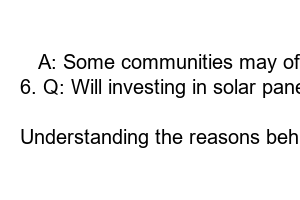전기요금 인상
Title: Understanding the Impact of Electricity Rate Hike on Your Monthly Bills
Introduction:
In recent months, many households and businesses have encountered an unpleasant shock in the form of higher electricity bills. This sudden surge in costs can leave you wondering about the reasons behind the electricity rate hike and how it affects your overall budget. In this blog post, we will delve into the causes behind these price increases and equip you with essential knowledge to navigate through this challenging situation.
1. Why are electricity rates rising?
Electricity rates are increasing due to a variety of factors such as rising production costs, infrastructure upgrades, and the growing demand for renewable energy sources. These factors necessitate adjustments to ensure a reliable power supply and meet environmental goals.
2. Understanding the impact on your bills:
The recent rate hike means that you may notice a significant increase in your monthly electricity bill. This can be attributed to the higher cost of generating and distributing electricity, which is ultimately passed on to consumers. It is vital to comprehend how this affects your budget and find ways to mitigate the impact.
3. How can you save on electricity bills?
Reducing your electricity consumption is a proactive approach to lower your bills. Start by adopting energy-efficient habits such as using LED bulbs, unplugging electronics when not in use, and optimizing the use of major appliances. Additionally, investing in energy-saving appliances and properly insulating your home can lead to long-term savings.
4. The role of renewable energy:
Transitioning to renewable energy sources is crucial for reducing electricity costs in the long run. Governments and utility companies are investing in renewable energy infrastructure to harness sustainable power and offer competitive rates. By embracing clean energy options, we can collectively mitigate the impact of rate hikes.
5. Seeking alternative energy suppliers:
Explore competitive energy markets that allow you to choose from different electricity suppliers. This enables you to select a plan tailored to your needs while potentially obtaining lower rates. Be sure to research and compare the available options and consider any contract terms or fees associated with switching suppliers.
6. Government initiatives and financial assistance:
Many governments offer financial incentives and assistance programs to alleviate the burden of higher electricity costs. Keep yourself informed about such initiatives and explore whether you are eligible for any subsidies, rebates, or tax credits that can help reduce your monthly bills.
FAQs:
1. Q: Will the electricity rate hike affect my overall utility bills?
A: Yes, an increase in electricity rates can affect your utility bills as electricity is a significant component of overall household energy usage.
2. Q: Can I negotiate with my electricity provider for a lower rate?
A: While negotiation is not always possible, contacting your provider can provide insights into available cost-saving options or plans.
3. Q: Are there any measures to track and monitor my energy usage?
A: Yes, many utilities offer online tools that allow you to track your energy consumption, helping you identify areas where you can reduce usage.
4. Q: How long will the electricity rate hike last?
A: The duration of the rate hike will vary based on numerous factors. Stay informed through official channels for updates.
5. Q: Are there any local community programs to tackle higher energy costs?
A: Some communities may offer assistance programs specifically designed to support residents facing financial challenges due to electricity rate hikes.
6. Q: Will investing in solar panels help offset the increased electricity costs?
A: Investing in solar panels can significantly reduce your dependence on the grid and lower your electricity bills in the long term.
Summary:
Understanding the reasons behind electricity rate hikes empowers you to make informed decisions to mitigate their impact. By adopting energy-efficient practices, exploring renewable energy options, and taking advantage of government initiatives or alternative suppliers, you can navigate through the challenges of higher electricity costs while maintaining a sustainable lifestyle.

